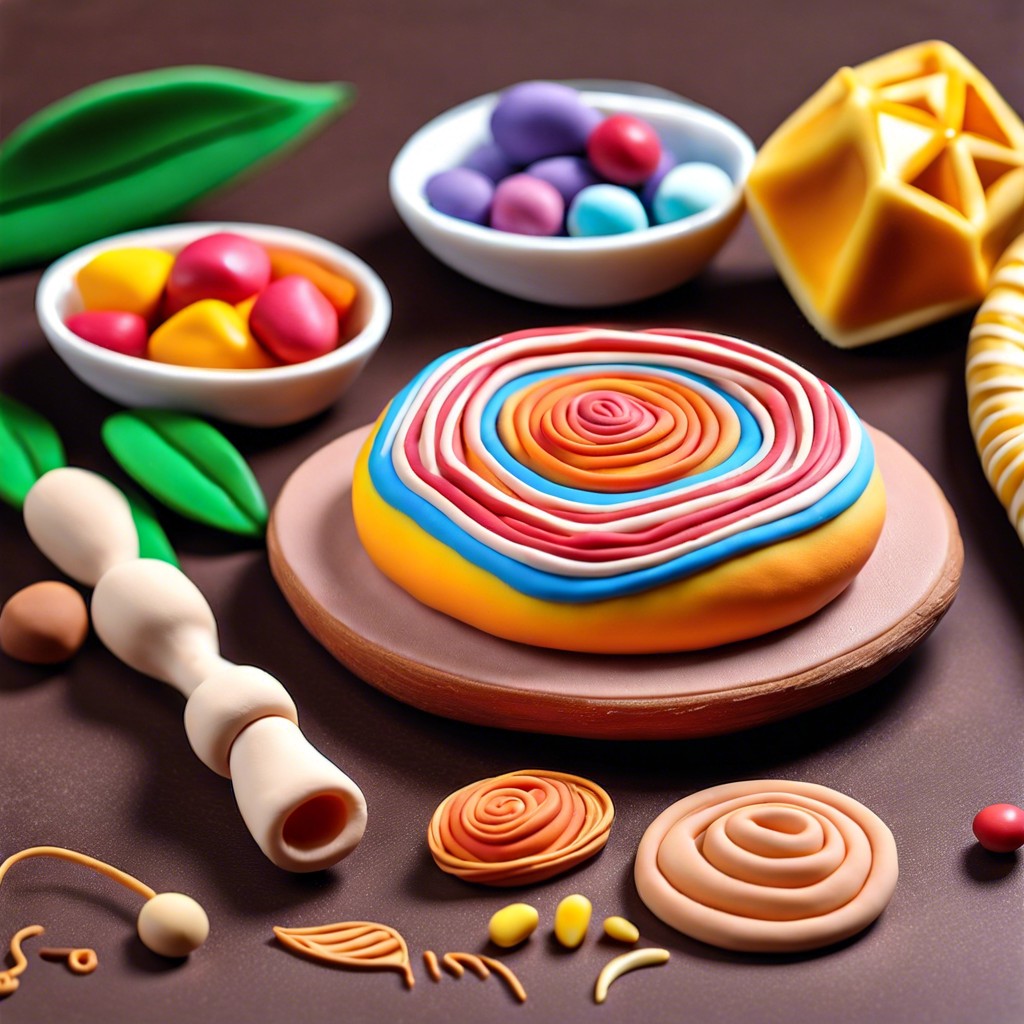You’ll learn whether you need to bake polymer clay for your projects and how to do it correctly if you do.
Key takeaways:
- Baking polymer clay makes it strong and durable.
- Proper baking ensures even heating for better results.
- Skipping baking keeps clay soft and flexible.
- Follow baking instructions for best results.
- Check firmness, tap sound, and color for doneness.
Why Do You Need to Bake Polymer Clay?

Baking polymer clay transforms it from a squishy, moldable material into a solid, durable form. It’s like turning cookie dough into crunchy cookies, but with fewer calories and more sculpting.
First, the heat causes the particles in the clay to bind together. This process, called polymerization, makes your creation strong and long-lasting.
Second, an oven ensures even and consistent heating. This means all parts of your masterpiece, from the legs of a tiny clay penguin to the base of a decorative bowl, get the same love and care.
Skipping the baking step means your clay creation will stay soft and flexible. That’s great if you’re making stress balls, but not if you want anything more permanent or intricate.
Lastly, a baked polymer clay project is more resistant to mishaps. Dropping an unbaked clay gem will make you sad. Dropping a baked clay gem might just make you say “Phew!” and continue on with your day.
How Do You Bake Polymer Clay?
First, preheat your oven. Not a microwave, not your hairdryer—an actual oven. Every brand of polymer clay has its own specific baking temperature, usually around 265 to 275 degrees Fahrenheit. Your clay package will be kind enough to tell you.
Next, use a baking sheet lined with parchment paper or a ceramic tile. You don’t want your masterpiece sticking to the tray like a kid glued to their phone. Arrange your creations so they’re not touching each other. Crowding isn’t great for cookies, and it’s not great for clay either.
Keep an eye on the time. Polymer clay bakes for about 15-30 minutes per quarter inch of thickness. If your creation is thicker than a deep-dish pizza slice, be prepared to wait.
Finally, resist poking it right out of the oven. Hot clay is deceptive—it feels soft but will harden as it cools. Even though it might be tempting, give it some space. It’ll be worth it.
How Long Does It Take to Bake Polymer Clay?
The baking time for polymer clay can depend on a few factors, like the brand of clay you’re using and the thickness of your creation.
Generally speaking, most brands recommend baking at 275°F (135°C) for 15-30 minutes per quarter-inch of thickness. Sounds like the perfect excuse to discover your inner mathematician, doesn’t it?
If your masterpiece is thicker than a hamburger patty, you might need to bake it a bit longer. Conversely, if you’ve created something thin and delicate, like fairy wings or a pancake, adjust accordingly.
A good kitchen timer is invaluable. Trust it more than your ability to lose track of time binge-watching your favorite TV show. A little dedication here could save your project from turning into a crispy critter.
Bear in mind, flipping the oven light on and peeping through the glass can help you ensure everything is going as planned without letting out the precious heat. Who knew creating art could double as a mini science experiment?
How Do You Know When Your Polymer Clay Project Is Done Baking?
Here are some clues that your polymer clay masterpiece is fully baked. The edges should feel firm, not rubbery. If it’s still a bit bendy while it’s hot, that’s normal. Give it a break for a cool-down, and it’ll firm up.
Tap it lightly. Yup, give it a gentle knock-knock. A properly baked project should sound solid, not hollow. Don’t expect any grand symphonies, though—you’re not turning clay into a xylophone.
Color changes can be a sign too. Some clays darken slightly, but if it looks like crispy burnt toast, you might’ve overshot by a few minutes… or hours. Check the label for specific clues because clay brands can be as picky as cats.
Lastly, if you see bubbles, cracks, or a volcanic eruption, you might need to adjust your baking practices. Happy baking (the clay, not cookies)!
Additional Tips
Experiment with scrap pieces of clay first. It’s a good way to figure out the perfect baking time and temperature without risking your masterpiece.
Use a dedicated oven thermometer. Oven dials can be deceitful little tricksters, and your clay deserves an accurate baking environment.
Place your creations on an index card or plain white paper. This trick can help prevent shiny spots from forming on your piece.
If your clay burns, consider using a tent made from aluminum foil. It can protect your project from the ferocity of your oven’s heat.
Let your baked pieces cool completely before handling them. Hot clay is fragile and might break your heart (and your project) if you touch it too soon.
Recap




